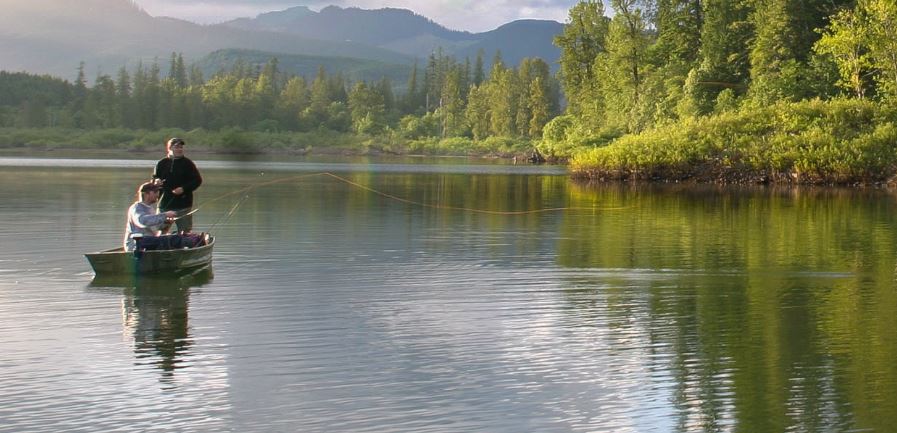LAGO
A rod for lake enthusiasts
Optimized for casting while sitting
Essential sizes & lengths

10'0" 5wt
LAGO 5100-4
|
Model LG-5100 |
Pieces 4 |
Weight (ounces) 3.9 |
Price $349.99 |
10'0" 6wt
LAGO 6100-4
|
Model LG-6100 |
Pieces 4 |
Weight (ounces) 4.1 |
Price $349.99 |
10'0" 7wt
LAGO 7100-4
|
Model LG-7100 |
Pieces 4 |
Weight (ounces) 4.4 |
Price $349.99 |
A Rod for Lake Enthusiasts
Conventional fly rods are a poor substitute for a precisely developed lake rod. These new rods were designed to get anglers fishing more effectively and efficiently in lakes of all sizes.

Optimized for Casting While Sitting
Lake fishermen are typically fishing from float tubes, small pontoons, or boats. This creates challenges when making long casts. The unique action and power blend matched to the 10′ length helps avoid hitting the water behind you on the back cast and the dreaded tailing loop.
The Lago series rods also live a double life as excellent summer steelhead or large trout nymphing rods.
Essential Sizes and Lengths
There are three sizes including a 10ft 5wt, 10ft 6wt, and 10ft 7wt. The 10 footers cover the gamut of fish sizes while also masterfully handling any stillwater line on the market. The rods feature semi gloss cobalt blue finish. Every rod is 4 piece and comes with a hard cast and rod sock.
Action vs Power Comparison
Action:
Fast action rods feature softer tips than medium action rods and provide a ‘stiffer’ feel. Fast action rods excel in the hands of anglers with more aggressive casting strokes and greater stroke control. Medium action rods are ideal for anglers with more fluid casting strokes and have a larger ‘sweet spot’ for a wider range of casting strokes. Consistently throwing a tailing loop? Your rod’s action may not be a good fit to you and your casting stroke.
Power:
A rod’s power is its resistance to flexing under load. Powerful rods are ‘beefier’ through the bottom half, generate higher line speeds, and are more adept at keeping big fish pinned. Delicate rods are more presentation-oriented, protect light tippet, and are a better choice for picky fish.
Wash all components with warm freshwater after each days use in saltwater. Pay extra attention to the space where the guides meet the blank and the metal parts of the reel seat. Try to keep sand and dirt out of the ferrules. Occasionally use a few drops of any reel oil or grease on the reel seat threads to keep it operating smoothly. Paraffin wax can also be used on the ferrules if needed to ensure a proper fit.
Do not use tape on your ferrules. If you do we’ll come steal all your bacon and PBR.
